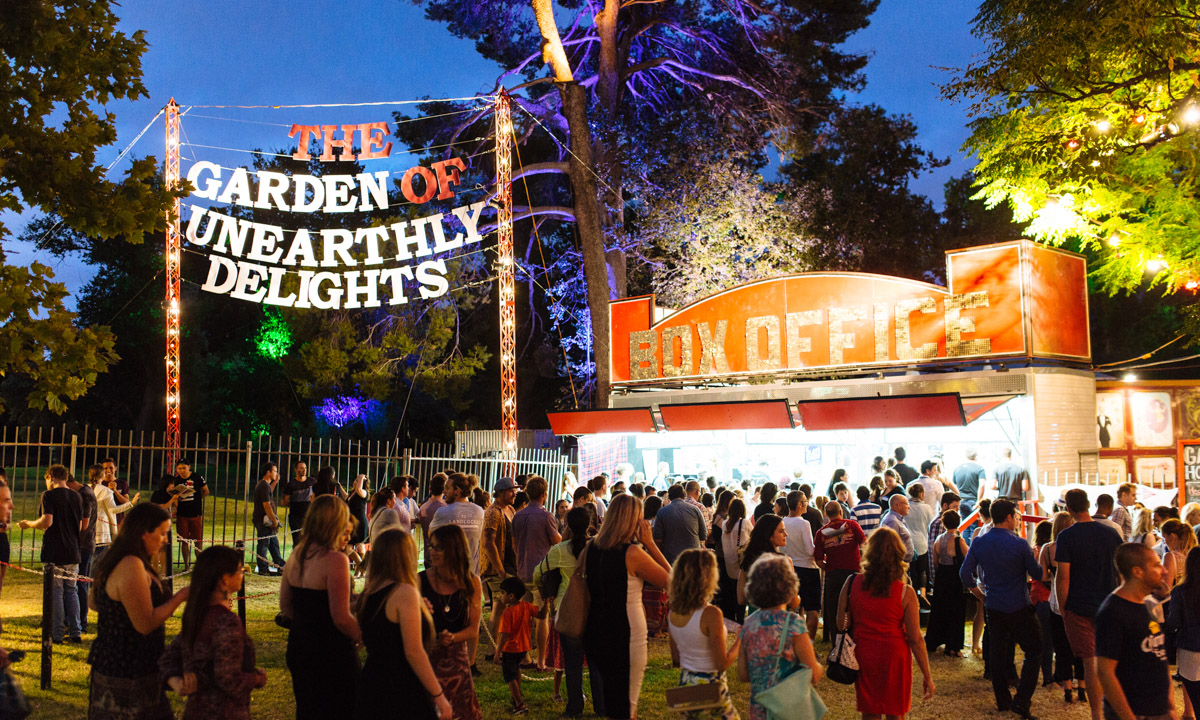Spending by interstate visitors coming to Adelaide for the Fringe is now six times higher than a decade ago, says an economic impact report.
Fringe attracts interstate big spenders
The Fringe Economic Impact report release today shows this year’s event attracted $121 million of new money to the state, up from $18 million in 2014.
Fringe CEO Heather Croall said the report took a 10 year retrospective look at the Fringe’s impact on the state.
“Of course everyone in South Australia knows about Fringe and in fact one in every two South Australians attend the Fringe, so our job has been to increase the number of tourists,” she said.
The average spend per tourist was $4529, up from $512 in 2014, while the average stay increased from two nights in 2014 to seven nights in 2024.
“For every dollar from the state government, the Fringe is returning $33, so it’s a return on investment of 33 to one,” Croall said.
“It’s a privilege and an honour to be part of an event that has such a big impact on the state and it’s a testament to everybody that comes out.”
Arts Minister Andrea Michaels says the Malinauskas Government was a proud Fringe supporter.
“Fringe’s remarkable growth over the past decade has helped cement our state’s reputation as the arts capital of Australia,” she said.
“Fringe has a significant cultural and economic impact in South Australia drawing thousands of visitors, boosting small businesses and creating opportunities for artists.”

In 2023, Fringe was the first Australian festival to ever sell one million tickets. This picture: Andre Castellucci
The Fringe also maintained its million ticket milestone from last year, with 1,040,305 tickets sold in 2024 at an average price of $32.
Of the $27 million total box office revenue, $25.6 million was paid out to artists and venues – an increase from 2014’s $11 million total box office revenue.
Croall told CityMag that the Fringe’s fee take from tickets had dropped from 15 per cent to 5 per cent in the last 10 years, with transaction fees transferred to the customer instead of the artist.
“If [artists] even sold the same number of tickets as 10 years ago with the same ticket price, they’re getting 10 per cent more than they used to get because we lowered our fees,” she said.
So, an artist selling tickets for $30 used to have about $4.50 taken out of their ticket spend before they were paid, but now it’s only about $1.50 taken out.
“Which is, when you add up a whole season, significant, but of course our mission is to try and get more and more funds to artists as we can,” Croall said.
Artist registration fees had also remained frozen for the past 10 years.
To register a show in any genre category, the starting price is $210 for three sessions. For a performing arts event with four sessions or more, it cost $395 per show.
Registrations make up only 1.18 per cent of the Fringe’s income.
A key way the Fringe has supported artists and venues is through a total of $1.1 million in grants distributed across 260 shows, including a $500,000 commitment from the state government.
Croall said that while Fringe helped some venues hang on a bit longer through the cost-of-living crisis, once that activity drops off, closures were still prevalent.
“It’s definitely a challenge and artists and venues facing the rising costs is something we are working really closely on and with them on and we realise that these are the big challenges ahead,” she said.
My Lover Cindi and Port Adelaide club Confession are two recipients of the government’s See it Live grants, which were extended in April to help offset rising costs associated with putting on gigs. Despite this, both venues have now closed. They join a number of CBD closures in the past year.

Gluttony is one of the major Fringe hubs in the east end. This picture: Johnny von Einem
Throughout this year’s Fringe season, CityMag kept an eye on the West End, which had Fringe programs run by venues like Nexus amid a landscape of closures.
According to data from the Adelaide Economic Development Agency (AEDA), foot traffic in the west end increased by 18 per cent compared to 2023.
The east end of the CBD still benefited the most from the Fringe, given the large Gluttony and Garden of Unearthly Delights are situated there, with foot traffic at an increase of 31 per cent from last year.
The west end and Hindley Street precinct saw total visitation up 5 per cent from the average weekend, while O’Connell Street and Hutt Street saw less activity than in 2023.
Between 1.3 and 1.4 million visitors were in the city every week during the festival, with a total $72.7 million of expenditure generated in the City of Adelaide.




